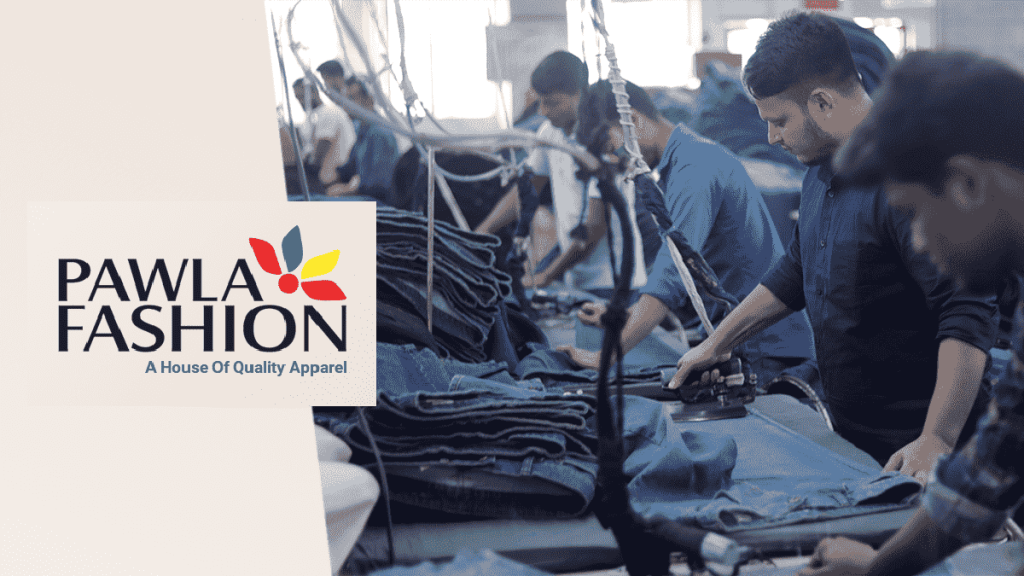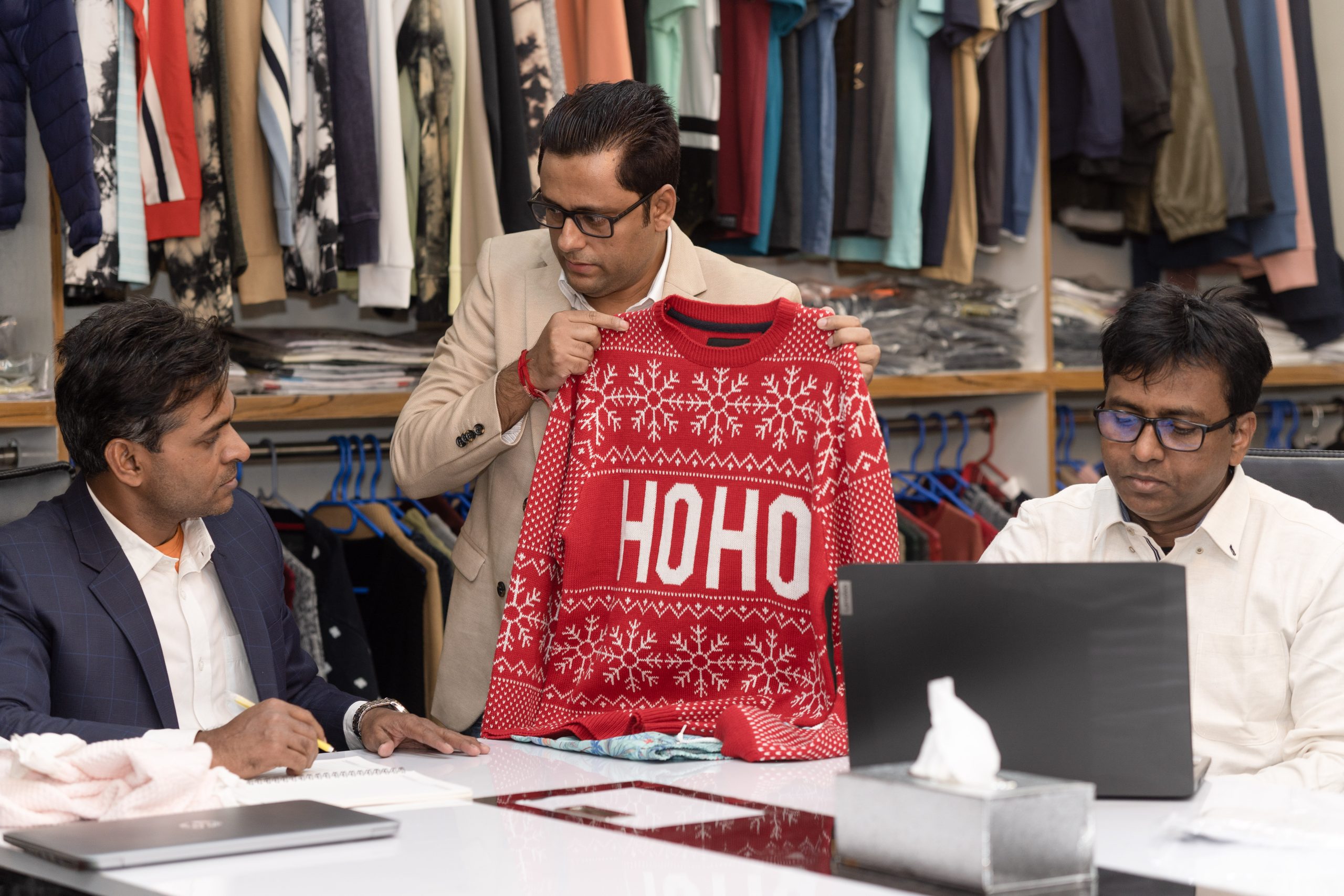Introduction to Bangladesh’s Top Green Garment Factories :
As the fashion industry continues to grow, so does the concern for its environmental impact. Bangladesh is one of the world’s largest garment exporters, but what does this mean for the environment? In this blog post, we will delve into the top green garment factories in Bangladesh and explore their efforts to reduce their environmental footprint. Join us as we uncover how these factories are leading the way in sustainable fashion production and setting a new standard for eco-friendly practices in the industry.
The garment industry in Bangladesh is the backbone of its economy, contributing to over 80% of the country’s total exports. It is also the second-largest exporter of ready-made garments after China. The industry employs more than four million workers, mostly women from low-income families, and plays a significant role in poverty reduction and women empowerment. Bangladesh’s garment industry started as a small-scale production unit in the 1970s but has now grown into a major global player. The country has become an attractive destination for international retailers due to its low labor costs and favorable business environment. The industry comprises both large-scale vertically integrated factories and small-scale subcontracting units.
Environmental Impact of Bangladesh’s Garment Industry: While the growth of the garment industry has brought economic benefits to Bangladesh, it has also raised concerns about its environmental impact. This section will discuss some key areas where the industry has had a negative impact on the environment.
Water Pollution: One of the major environmental issues related to garment factories is water pollution. The process of dyeing fabrics requires large amounts of water, which then becomes contaminated with toxic chemicals such as dyes, bleach, and detergents. These chemicals are often dumped into nearby rivers or open fields without proper treatment, polluting water sources and damaging aquatic life.
Air Pollution: The burning of fossil fuels for energy and transportation purposes by garment factories contributes significantly to air pollution in Bangladesh. This results in poor air quality which can lead to respiratory problems for workers and nearby communities.
Waste Management: Another problem associated with the garment industry is inadequate waste management practices. Large amounts of fabric scraps, packaging materials, and other wastes are generated during production but are often disposed of improperly or sent to landfills instead of being recycled or reused.
Working Conditions: In addition to its environmental impact, there have also been concerns about working conditions in some garment factories in Bangladesh. Workers, especially women, often face long working hours, low wages, and unsafe working conditions. This not only affects the well-being of workers but also has a social and economic impact on the community.
Despite these challenges, there have been efforts made by some garment factories in Bangladesh to reduce their environmental impact. In the next section, we will explore the top green garment factories in Bangladesh that are leading the way in sustainability practices and setting an example for others to follow.
The Green Movement in the Fashion Industry: The fashion industry has long been criticized for its negative impact on the environment. From excessive water usage and chemical pollution to unethical labor practices, the industry has faced numerous challenges in becoming more sustainable. However, in recent years, a significant shift towards sustainability and eco-friendliness has been seen in the fashion world. This movement is known as the “Green Movement” and it aims to reduce the environmental impact of the fashion industry.
One country that has made remarkable progress in this movement is Bangladesh. Despite being one of the largest garment exporters in the world, Bangladesh has also faced severe backlash for its unsustainable practices. However, with a growing awareness of environmental issues and pressure from international organizations, some of Bangladesh’s top garment factories have taken steps towards becoming greener. These green factories implement sustainable practices at every stage of production – from sourcing raw materials to packaging and shipping final products. One key aspect of their sustainability efforts is reducing water consumption. The textile industry is infamous for its high water usage, but these green factories have implemented innovative technologies such as closed-loop systems that recycle and reuse water during production processes.
Another significant step taken by these factories is reducing their carbon footprint. They have invested in renewable energy sources like solar panels to power their operations instead of relying on fossil fuels. Additionally, they have adopted energy-efficient machinery to reduce electricity consumption. But perhaps one of the most crucial aspects of these green factories is their focus on ethical labor practices. In addition to protecting the environment, they also prioritize fair treatment and safe working conditions for their employees. This not only benefits workers but also reduces turnover rates, leading to a more efficient workforce.
Furthermore, these top green garment factories in Bangladesh are also taking measures to reduce waste generation through recycling programs and implementing sustainable packaging solutions such as biodegradable materials. While there are undoubtedly challenges involved in making a large-scale industry like fashion more environmentally friendly, it is encouraging to see that some companies are taking the initiative and leading the way towards a greener future. However, there is still much room for improvement, and it is essential for other factories to follow in their footsteps and join the Green Movement in the fashion industry. By doing so, we can collectively reduce the environmental impact of this booming industry and create a more sustainable world for future generations.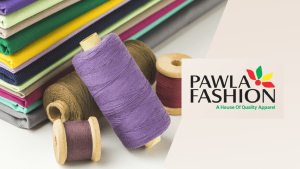
Top Green Garment Factories in Bangladesh: Bangladesh is the second-largest producer of garments in the world, with a thriving garment industry that employs millions of workers and contributes significantly to the country’s economy. However, this growth has come at a cost – environmental degradation. The textile and garment industry is notorious for its negative impact on the environment, with water and air pollution, excessive energy consumption, and waste generation being some of its major concerns. Amidst these challenges, there are a few green garment factories in Bangladesh that have taken significant steps towards reducing their environmental footprint. These top green garment factories have implemented sustainable practices such as using eco-friendly materials, adopting renewable energy sources, reducing water usage, and implementing waste management systems.
Here are some of the top green garment factories in Bangladesh that are leading the way towards a more sustainable future:
DBL Group: DBL Group is one of the largest apparel manufacturers in Bangladesh with a commitment to sustainability. They have implemented various initiatives such as investing in solar panels to generate clean energy, using organic cotton for their products, and implementing a zero-waste policy. They also have an effluent treatment plant (ETP) that treats wastewater before releasing it into nearby water bodies.
Ananta Group: Ananta Group is another leading player in the Bangladeshi garment industry with a focus on sustainability. They have established an ETP that uses state-of-the-art technology to treat wastewater from their production processes. Additionally, they have installed solar panels at their factories and use LED lights to reduce electricity consumption.
Pacific Jeans: Pacific Jeans is known for its innovative approach toward sustainability while maintaining high-quality standards for their products. They have implemented various measures such as using biodegradable packaging materials and installing rooftop solar panels at their factories to meet their energy requirements.
Beximco Apparels Ltd: Beximco Apparels Ltd has made significant strides towards sustainability by introducing initiatives such as rainwater harvesting, waste recycling, and renewable energy sources. They have also received multiple certifications for their sustainable practices, including LEED Platinum certification for their green building.
Ha-Meem Group: Ha-Meem Group is a pioneer in sustainable garment manufacturing in Bangladesh. They have implemented various eco-friendly initiatives such as using organic cotton, implementing water-saving technologies, and reducing greenhouse gas emissions through the use of renewable energy sources.
These top green garment factories in Bangladesh serve as shining examples of how the textile and garment industry can operate sustainably without compromising on quality or profitability. Their efforts not only benefit the environment but also set an example for other factories to follow suit and contribute towards a greener future.
Environmental Impact of These Factories: The garment industry is a significant contributor to Bangladesh’s economy, accounting for over 80% of its exports and providing employment opportunities to millions of people. However, the rapid growth of this industry has come at a cost – the environmental impact. The production process in garment factories releases harmful pollutants into the air, water, and soil, causing severe damage to the environment and public health.
One of the most significant concerns regarding the environmental impact of Bangladesh’s top green garment factories is air pollution. The production process involves the use of chemicals such as dyes, bleaches, and detergents which emit toxic gases like sulfur dioxide and nitrogen oxides into the atmosphere. These gases contribute to smog formation and can cause respiratory problems in workers and nearby communities. Moreover, these factories also generate a large amount of solid waste that often ends up in landfills or open dumping sites. This waste includes scraps of fabric, packaging materials, plastic bags, and other non-biodegradable materials. Improper disposal methods contaminate soil quality and groundwater resources through leaching or runoff.
Water pollution is another major concern associated with garment factories in Bangladesh. The production process requires vast amounts of water for washing fabrics before dyeing them. This wastewater contains high levels of chemicals such as lead, mercury, and cadmium which are hazardous to human health if consumed or used for irrigation purposes by nearby communities. Additionally, these chemicals can harm aquatic life when they enter rivers or lakes through discharge pipes without proper treatment. Furthermore, excessive use of water by garment factories leads to freshwater scarcity in surrounding areas where access to clean drinking water is already limited. It creates social tension between factory owners who have access to abundant resources compared to local communities. In addition to the air and water pollution concerns mentioned above, textile industries also contribute significantly towards greenhouse gas emissions due to their heavy reliance on fossil fuels for energy generation during manufacturing processes. To mitigate these adverse environmental impacts caused by garment factories, the government of Bangladesh has implemented stricter regulations and policies. These include mandatory effluent treatment plants, waste management systems, and water conservation measures. Additionally, eco-friendly practices such as using renewable energy sources and sustainable production techniques are encouraged.
While the garment industry in Bangladesh has brought economic prosperity to the country, it is crucial to address its environmental impact seriously. The implementation of sustainable practices and strict compliance with regulations can help minimize these impacts and create a more environmentally friendly future for the garment industry in Bangladesh.
Reduction of Water and Energy Consumption: The textile and garment industry is one of the largest contributors to Bangladesh’s economy, employing millions of workers. However, it is also a major source of environmental pollution, primarily due to its high water and energy consumption. In recent years, there has been a growing concern about the impact of these factories on the environment and steps have been taken to reduce their ecological footprint. One of the most significant ways in which green garment factories in Bangladesh are addressing this issue is through the reduction of water consumption. Traditional textile manufacturing processes involve excessive use of water for washing, dyeing, and finishing fabrics. This not only leads to large amounts of wastewater being generated but also puts a strain on limited water resources in the country. To combat this problem, green garment factories have implemented various measures such as investing in technology that reduces water usage by recycling and reusing wastewater. For instance, some factories use advanced treatment systems like reverse osmosis or biological treatment plants to purify wastewater before it is discharged into natural water bodies. In addition to this, many factories have also started using eco-friendly dyes that require less water compared to traditional dyes. These dyes are also free from toxic chemicals that pose a threat to both human health and the environment. Furthermore, some companies have adopted “zero liquid discharge” policies where they aim to recycle all their wastewater within the factory premises instead of discharging it outside.
Apart from reducing water consumption, green garment factories are also making efforts to minimize their energy usage. The production process in these factories involves numerous energy-intensive steps such as spinning yarns, weaving fabrics, and running machines for sewing garments. To reduce their carbon footprint and conserve energy resources like electricity and gas, these factories have turned towards renewable energy sources such as solar power. Moreover, technological advancements have allowed for more efficient machinery that consumes less energy while maintaining productivity levels. Some companies have even installed automated systems that turn off lights and machines when not in use, and energy-efficient lighting systems to further reduce their energy consumption.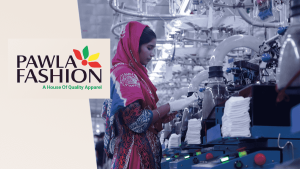
The reduction of water and energy consumption by green garment factories is a crucial step towards mitigating the environmental impact of Bangladesh’s textile industry. These initiatives not only benefit the environment but also contribute to cutting costs for these factories, making them more sustainable in the long run. With continued efforts and innovations, Bangladesh’s top green garment factories can set an example for other industries to follow suit and create a more eco-friendly manufacturing sector.
Waste Management Practices: Waste management is one of the most critical aspects of sustainable development, especially in the garment industry. With Bangladesh being one of the leading exporters of garments worldwide, it is essential to explore and understand the waste management practices implemented by its top green garment factories. The textile and garment industry generates a significant amount of waste during its production process. This waste includes scraps of fabric, yarns, dyes, chemicals, and other packaging materials. The improper disposal or management of this waste can have severe consequences on the environment and human health. Therefore, it is crucial for garment factories to adopt efficient waste management practices. One such practice is reducing waste at its source through better design and production processes. Bangladesh’s top green garment factories have implemented various measures to minimize their waste generation. They use cutting-edge technology that allows for precise cutting patterns, resulting in minimal fabric wastage. Furthermore, they also utilize advanced dyeing techniques that reduce water and chemical usage while producing less wastewater. Another crucial aspect of effective waste management practices is recycling and reusing materials wherever possible. The top green garment factories in Bangladesh have set up facilities specifically for recycling fabric scraps into new products like bags, and rugs, or even using them as stuffing material for furniture. Moreover, many companies are taking initiatives to recycle water used in dyeing processes to minimize water wastage. To ensure proper disposal of hazardous wastes like dyes and chemicals used in the production process, these factories follow strict regulations set by environmental authorities such as the Department of Environment (DoE). They have designated storage areas with appropriate labeling and safety measures to prevent any harmful effects on the environment or workers’ health. In addition to implementing sustainable practices within their own operations, these green garment factories also promote responsible consumption among consumers through various initiatives like encouraging customers to recycle clothing items instead of throwing them away.
Furthermore, these factories also prioritize community engagement by organizing awareness campaigns on proper disposal methods and providing training programs on waste management to local communities. This not only benefits the environment but also creates a sense of responsibility towards sustainable living among the community members. The top green garment factories in Bangladesh have made significant strides towards implementing effective waste management practices. Through their efforts, they are setting an example for the industry and promoting a greener and more sustainable future for all.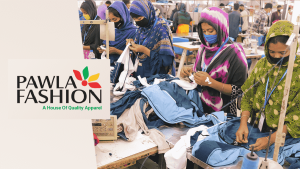
Use of Sustainable Materials: The use of sustainable materials in the garment industry is a crucial step towards reducing the overall environmental impact. Bangladesh’s top green garment factories have recognized this and are actively working towards incorporating sustainable materials into their production processes. One of the most commonly used sustainable materials in the garment industry is organic cotton. This type of cotton is grown using methods that do not involve harmful pesticides and chemical fertilizers, making it better for both the environment and human health. Many green garment factories in Bangladesh have started using organic cotton in their production, thereby reducing their carbon footprint. In addition to organic cotton, some factories are also using recycled fabrics, such as recycled polyester or nylon, which are made from post-consumer plastic waste. Utilizing these materials, not only reduces landfill waste but also decreases energy consumption and emissions during production.
Another important aspect of sustainability in the garment industry is the use of natural dyes instead of synthetic ones. Chemical dyes not only harm the environment by polluting water sources but also pose a threat to workers’ health. Natural dyes, on the other hand, come from plant-based sources like fruits, vegetables, and flowers and do not contain toxic chemicals. Green garment factories in Bangladesh are increasingly adopting natural dyeing techniques to produce environmentally friendly clothing. Some factories have also started incorporating innovative materials such as bamboo fibers or Tencel® into their production processes. Bamboo plants require less water than conventional crops and can be harvested without killing them, making them a highly renewable resource for textile production. On the other hand, Tencel® is made from sustainably sourced wood pulp and has a closed-loop manufacturing process that minimizes chemical waste. Aside from utilizing sustainable materials for clothing production, these top green garment factories also prioritize proper waste management practices. They have implemented systems for recycling fabric scraps or repurposing them into new products like bags or home decor items.
Furthermore, these factories ensure fair labor practices by providing safe working conditions and fair wages to their employees. This not only supports the well-being of workers but also contributes to social sustainability. The use of sustainable materials in Bangladesh’s top green garment factories is a significant step towards reducing their environmental impact. By incorporating eco-friendly materials and adopting sustainable production practices, these factories are setting an example for the rest of the industry and making a positive impact on both people and the planet.
Impact on Local Communities: The garment industry in Bangladesh has been a major contributor to the country’s economic growth and development, providing employment opportunities for millions of people. However, this rapid industrialization and growth have also come at a cost – the environmental impact on local communities. One of the main concerns is the pollution caused by the textile dyeing and finishing processes in green garment factories. These processes involve using large quantities of water, chemicals, and energy, which often end up being discharged into nearby water bodies or landfills without proper treatment. This not only contaminates the environment but also poses serious health risks to nearby communities that rely on these resources for their daily needs. Furthermore, many green garment factories are located in densely populated urban areas, leading to air pollution from emissions such as carbon monoxide and sulfur dioxide. This air pollution can cause respiratory illnesses among workers and neighboring communities, especially children and elderly people who are more vulnerable. Another issue is the disposal of textile waste. Green garment factories produce tons of waste every day, including fabric scraps, packaging materials, and leftover dyes and chemicals. Improper disposal methods can contaminate soil and groundwater, affecting agricultural lands and potentially harming local food sources.
Moreover, the fast-paced production demands of the fashion industry lead to excessive energy consumption in these factories. This contributes significantly to carbon emissions that contribute to climate change – a global crisis that affects not just Bangladesh but the entire world. The environmental impact of green garment factories also extends beyond physical health hazards. The noise levels from machinery used in these factories can be deafening for workers who do not have adequate protective gear. It also disturbs the peace of surrounding communities who may experience disruptions during their daily activities.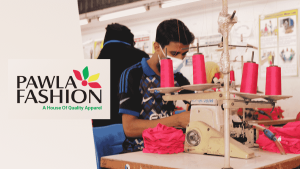
However, it is essential to note that not all green garment factories have negative impacts on local communities. Some companies have taken steps towards sustainability by implementing eco-friendly practices such as using renewable energy sources like solar panels or implementing wastewater treatment systems. While the garment industry has brought economic benefits to Bangladesh, it is crucial to address and mitigate its environmental impact on local communities. Government regulations and enforcement of strict environmental standards for green garment factories are necessary, along with the responsibility of companies to adopt sustainable practices. It is only through collective efforts that we can ensure a greener and healthier future for all.
Challenges Faced by Green Garment Factories: Green garment factories in Bangladesh have emerged as leaders in sustainable and eco-friendly practices within the fashion industry. They have made considerable strides in reducing their carbon footprint, minimizing waste, and promoting ethical labor practices. However, these factories still face a number of challenges that hinder their efforts towards achieving complete sustainability. One of the major challenges faced by green garment factories is the lack of access to sustainable materials. While there has been an increase in demand for sustainable fabrics, they are often not easily available or affordable for manufacturers. This forces many factories to resort to using conventional materials which may have a negative environmental impact. Additionally, the limited availability of sustainable materials also slows down production processes and increases costs for these factories. Another challenge faced by green garment factories is the strict compliance requirements set by international certification bodies such as LEED (Leadership in Energy and Environmental Design). These certifications require significant investments and resources from factories in order to be achieved. For smaller or medium-sized green garment factories, meeting these requirements can be financially burdensome and time-consuming. Furthermore, due to the high cost associated with running a green factory, many manufacturers struggle with maintaining competitive pricing while still adhering to sustainable practices. This becomes even more challenging when competing with conventional garment factories that do not prioritize sustainability but can offer lower prices due to reduced production costs.
The geographical location of Bangladesh also poses challenges for green garment factories. The country faces frequent natural disasters such as floods and cyclones which can cause disruptions in production processes and damage infrastructure. This makes it difficult for these factories to maintain consistent sustainability standards as they may need to divert resources towards rebuilding after natural disasters. In addition, there is a lack of awareness among consumers about the importance of supporting sustainable fashion brands. As a result, green garment factories may struggle with marketing their products at competitive prices compared to fast-fashion companies that produce cheaper but environmentally damaging goods. Despite these challenges, green garment factories continue to strive towards achieving complete sustainability. They are constantly innovating and finding ways to overcome these hurdles to make a positive impact on the environment and society as a whole. By supporting these factories, consumers can contribute towards creating a more sustainable future for the fashion industry.
Efforts towards Further Sustainability: The top green garment factories in Bangladesh have made significant efforts towards further sustainability in recent years. These efforts have been driven by the growing concern for the environmental impact of the fashion industry, and the need to address it. By implementing sustainable practices, these factories aim to reduce their carbon footprint and promote a more environmentally friendly approach to manufacturing. One of the key initiatives taken by these factories is the use of eco-friendly materials in their production processes. This includes using organic cotton, recycled fabrics, and natural dyes instead of harmful chemicals. These materials not only benefit the environment but also promote ethical and fair trade practices. In addition to using sustainable materials, these factories have also invested in eco-friendly technology. This includes energy-efficient machinery, solar panels, and water recycling systems. Such measures not only reduce their overall energy consumption but also lower their operational costs in the long run.
Moreover, many of these factories have implemented strict waste management systems to minimize their environmental impact. They have set up recycling facilities within their premises where waste materials such as fabric scraps are collected and repurposed into new products or donated to local communities for creative projects. This not only reduces landfill waste but also promotes a circular economy within the fashion industry. Furthermore, these green garment factories have prioritized employee welfare by providing safe working conditions and fair wages. They also offer training programs on sustainable practices for their workers, empowering them with knowledge on how they can contribute towards a greener future. Apart from internal efforts towards sustainability, these factories are actively engaging with external stakeholders to spread awareness about environmental issues within the fashion industry. They collaborate with NGOs and other organizations to organize workshops and seminars on topics such as sustainable sourcing and production methods. While Bangladesh’s top green garment factories have already made significant strides towards sustainability, they continue to push for even more progress through ongoing efforts. With a continuous focus on incorporating eco-friendly practices throughout all aspects of their operations, these factories are setting an example for the rest of the fashion industry to follow. Their efforts towards further sustainability not only benefit the environment but also contribute to creating a more socially responsible and ethical fashion industry.
Government Initiatives: The government of Bangladesh has recognized the importance of sustainable practices in the garment industry and has taken several initiatives to promote environmental sustainability in its top green garment factories. These initiatives not only aim to reduce the negative impact on the environment but also ensure sustainable development for the country. One of the major government-led initiatives is the formation of a National Committee on Sustainable Development (NCSD) which was established in 1992. The committee is responsible for coordinating policies and actions related to sustainable development, including those concerning environmental protection in industries such as garments. This has led to stricter regulations and guidelines for factories, ensuring their compliance with international environmental standards. In addition, the government has also launched various programs to encourage eco-friendly practices in the garment sector. One such program is the ‘Eco-Industrial Park’ initiative, which aims at creating industrial parks specifically designed with environmentally friendly infrastructure and operations. These parks have facilities for waste management, water treatment plants, renewable energy sources, and green transportation systems. This not only reduces pollution but also promotes sustainable production methods. To further support these efforts, the government has implemented policies that provide incentives for factories that adopt environmentally friendly practices. This includes tax breaks and financial assistance for companies that invest in renewable energy sources or implement waste management systems.
Furthermore, Bangladesh’s top green garment factories are required by law to obtain an Environmental Clearance Certificate (ECC) before starting their operations. This certificate ensures that all necessary measures have been taken by the factory to limit its environmental impact. Additionally, regular monitoring and inspections are conducted by relevant authorities to ensure compliance with environmental regulations. The government has also made significant investments in research and development towards finding innovative solutions for sustainable production processes in garments. The Ministry of Environment & Forests has funded several projects focused on reducing carbon emissions through energy-efficient technologies and promoting eco-friendly materials.
These government initiatives showcase a strong commitment to promoting sustainability in Bangladesh’s top green garment factories. However, there is still room for improvement, and continuous efforts are needed to ensure long-term environmental sustainability in the garment industry.
Collaborations with International Organizations: In recent years, Bangladesh’s top green garment factories have been making significant efforts to reduce their environmental impact and improve sustainability. One crucial aspect of these initiatives has been the collaborations with international organizations that aim to support and promote sustainable practices in the fashion industry. One such organization is the Sustainable Apparel Coalition (SAC), a global alliance of apparel, footwear, and textile companies committed to improving social and environmental sustainability throughout the supply chain. The SAC works closely with garment factories in Bangladesh to help them measure their environmental performance through its Higg Index tool. This tool allows factories to assess their resource use, waste management, and chemical usage, enabling them to identify areas for improvement and set targets for reducing their environmental impact.
Another notable collaboration is between the top green garment factories in Bangladesh and the Better Cotton Initiative (BCI). BCI is a non-profit organization that promotes sustainable cotton production by training farmers on responsible farming practices, reducing water usage, and minimizing the use of pesticides. Through this partnership, garment factories can source sustainably grown cotton while supporting smallholder farmers in rural areas. Furthermore, some of Bangladesh’s top green garment factories have also joined forces with Fashion Revolution – a global movement advocating for transparency and ethical practices in fashion supply chains. This collaboration involves promoting sustainable sourcing of materials as well as ensuring safe working conditions for factory workers. A significant step towards reducing pollution caused by textile manufacturing was taken when some Bangladeshi garment factories joined hands with the ZDHC (Zero Discharge of Hazardous Chemicals) Foundation. ZDHC works towards eliminating harmful chemicals from all stages of textile production globally. Under this partnership, participating companies commit to implementing safer chemical management systems along with regular audits by trained professionals. The collaborations between Bangladeshi green garment factories and international organizations have played a vital role in driving positive change within the country’s fashion industry. These partnerships not only provide technical support and resources but also help raise awareness and promote sustainable practices. By working together, these organizations are creating a greener, cleaner, and more ethical future for the fashion industry in Bangladesh.
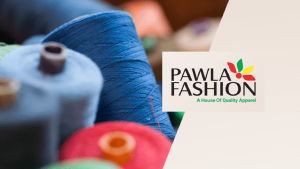 In the end, Bangladesh is one of the leading garment manufacturers in the world, with its textile industry accounting for nearly 80% of its total export earnings. As a major contributor to the country’s economy, the garment industry has played a significant role in uplifting millions of people out of poverty and providing employment opportunities for both skilled and unskilled workers.
In the end, Bangladesh is one of the leading garment manufacturers in the world, with its textile industry accounting for nearly 80% of its total export earnings. As a major contributor to the country’s economy, the garment industry has played a significant role in uplifting millions of people out of poverty and providing employment opportunities for both skilled and unskilled workers.
However, this rapid growth has also led to various environmental challenges, such as air pollution, water contamination, and deforestation. In recent years, Bangladesh has made efforts towards creating more sustainable practices within its garment factories through initiatives like the Green Factory Certification Program (GFCP). This program aims to reduce environmental impacts by implementing eco-friendly production processes and promoting social responsibility. One of the top green garment factories in Bangladesh is DBL Group’s Hazipur factory. This factory has been awarded multiple certifications for its environmentally friendly practices, including LEED Platinum certification from the US Green Building Council. The factory utilizes solar energy to power its operations and has implemented an on-site effluent treatment plant (ETP) to treat wastewater before it is discharged into nearby water bodies. Additionally, they have installed rainwater harvesting systems to reduce their dependence on groundwater. Another notable green factory is Fakir Knit-wears Ltd., which has received numerous awards for sustainability practices such as ISO 14001:2015 certification. The company invests in renewable energy sources like solar panels and bio-gas plants to power its operations while also reducing carbon emissions.
These are just two examples of how green garment factories in Bangladesh are leading the way towards sustainability. These factories not only focus on reducing their own environmental impact but also work towards creating a positive change within their communities. For instance, some factories have implemented waste management programs that encourage proper disposal techniques among local residents. Moreover, these factories prioritize workers’ health and safety by providing them with protective gear and promoting awareness about occupational hazards. They also offer training programs to educate workers about sustainable practices and how they can contribute to reducing environmental impacts.
While Bangladesh’s garment industry has faced criticism in the past for its environmental impact, it is now taking significant steps towards sustainability. Green garment factories are not only beneficial for the environment but also for the workers’ well-being and the community as a whole. With more factories adopting eco-friendly practices, we can hope to see a greener and more sustainable future for Bangladesh’s textile industry.
